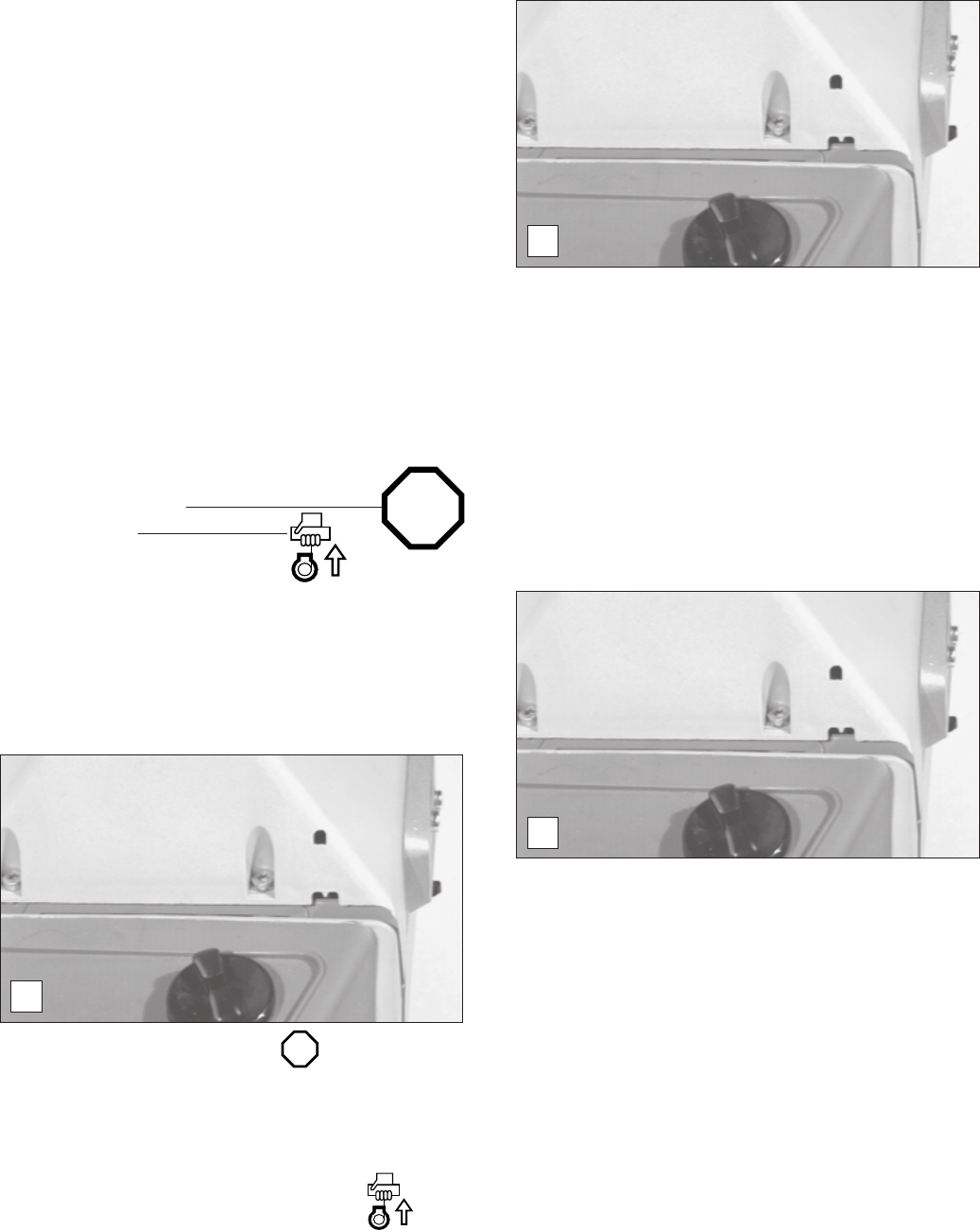
17
Carburetor adjustment
Important information:
The carburetor of this tool is fitted with limiter caps which restrict
the range of adjustment and prevents over-rich mixture
settings. This ensures providing good engine power and
efficient fuel consumption.
Before installing the limiter caps, the manufacturer performs
the „Basic Adjustment” procedure.
Maximum power is achieved throughcarburetor adjust-
ment. It requires a warm engine and a clean air filter and
should preferably be performed by an expert.
The carburetor comes factory-set for the atmospheric pres-
sure at sea-level. At other elevations and during the run-in
phase with a new engine it may be necessary to adjust the
carburetor.
A tachometer (order no. 950 233 210) is a must for accurate
carburetor adjustment.
Before adjusting the carburetor, install the cutting tool you are
going to use and warm up the engine by running it 3-5 min-
utes.
For a precise adjustment the following steps are to be
performed:
1. Check adjustment
2. Start engine
3. Set idling speed
4. Adjust speed
5. Check idling speed
6. Check acceleration
7. Check max. speed or output
8. Repeat adjustment procedure starting with step 3, until
idling speed, max. speed and acceleration are reached
with the adjustment made.
A
Adjustment instructions (step 1)
- Before initial operation make sure that the adjusting screws
(H and L) have not been set in all the way. Limiter caps do
not protect the engine from leaning.
- Turn the two adjusting screws (H and L) counter-clock-
wise as far as they will go.
- Start the engine and let it warm up (step 2).
L H
B
Set idling speed (step 3)
- If the cutting tool turns when the engine is idling, screw the
throttle-valve stop screw (S) until the cutting tool stops
turning. The idling speed should be now 2,300-2,500 rpm/
min.
Adjust speed (step 4)
- Set the engine speed to 13,000-13,500 RPM by adjusting
the main jet screw (H). Screwing it in makes the fuel/air
mixture leaner (less fuel, more air) and increases the engine
speed.
Caution:
Engine speeds above 13,500 RPM reduce engine life!
S
H
C
Check idling speed (step 5)
- Now check the idle speed. It should be 2,300-2,500 RPM
(the cutting tool should not turn). If necessary, adjust the
idle speed with the idle jet screw (L). Turning it in increases
the speed, and turning it out decreases it.
Check acceleration (step 6)
- This is the time it takes for the engine to go from idle speed
to maximum speed when you press the throttle hard.
- If acceleration is too slow, turn the idle screw (L) out about
1/8 turn.
L
STOP
STOP


















